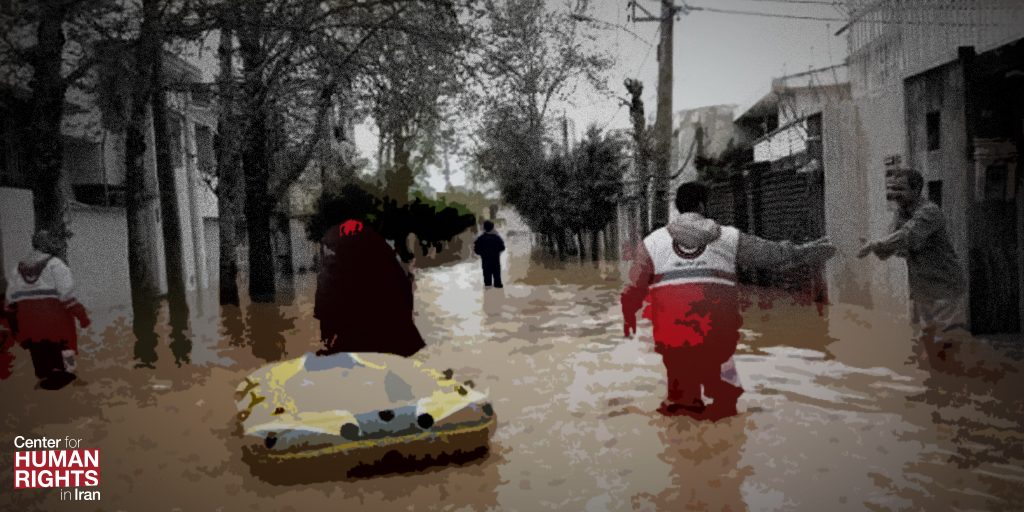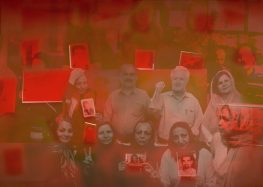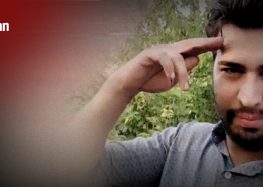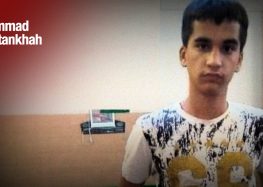Shiraz Floods: Safeguarding Human Rights When Natural Disasters Hit

At least 19 people have died in Shiraz, the capital of Iran’s Fars Province, as a result of flash flooding from a sudden, heavy downpour of rain. State media reports indicate at least 100 others have been injured and thousands of homes have been damaged there. The provinces of Golestan and Mazandaran in the north have also been impacted by flooding.
Research by the UN and humanitarian aid organizations show that natural disasters heighten the risk of grave human rights violations, including discrimination and gender-based violence.
Guidelines adopted in 2006 by a forum of UN and non-UN humanitarian partners, the Inter-Agency Standing Committee (IASC), promote a rights-based approach to disaster relief efforts. Following are excerpts from those guidelines.
Measures to Prevent Violence and Discrimination
1) “Protection of Life; Security and Physical Integrity of the Person; and Family Ties”
The IASC notes that when necessary, evacuations “should be carried out in a manner that fully respects the rights to life, dignity, liberty and security of those affected and that does not discriminate against anyone.”
This requires communicating the reason for the evacuation in a language that people can understand as well as ensuring families are not separated. Relief actors also have a responsibility to protect people’s security before and after the emergency phase including against gender-based violence.
Preventative measures include:
- Identifying and mapping persons particularly exposed to the risk of violence, for instance single women or girls, single parent households, single or non-accompanied children, older persons, persons with disabilities, etc.;
- Advocating for additional deployment of law enforcement personnel able to provide the necessary protection to areas or sites at risk of or experiencing instances of gender-based violence, robberies, looting, etc. or a general break-down of law and order;
- Conducting awareness raising among persons who are exposed to new specific
protection needs as a consequence of the disaster about these new risks, e.g.
exploitation, trafficking, etc.
- Avoiding large or overcrowded collective shelters; and
- Including representatives of affected populations, including women, children, older persons and persons with disabilities in the design of camps and collective centres, in particular regarding:
- Design, location and lay-out of shelter;
- Lighting, fencing and other security measures; and
- Safe location of and access to food distribution and water points
2) “Protection of rights related to the Provision of Food; Health; Shelter; and Education”
The IASC states that “humanitarian goods and services should be provided on the basis of assessed needs, without any distinction of any kind other than that of differing needs and without any discrimination as to race, color, sex, language, disability, religion, political or other opinion, national or social origin, property, birth, age, or other status.”
Measures for preventing discrimination in natural disaster relief efforts include:
- Use of proven assessment tools that include all categories of persons with special needs and allow objective identification of needs;
- Specific monitoring whether persons with special needs, older persons, persons with disabilities, sick persons or female-headed households with infants and young children have equal access to food, water, health and other humanitarian services and, if not, giving them priority access, or setting up separate distribution points/separate hours for distribution of goods and for services, etc.;
- Systematic inclusion of female-headed households, unaccompanied children, older persons, persons with disabilities and other persons with special needs in the distribution of humanitarian goods;
- Securing distribution points against rioters or others ready to use violence; and
- Monitoring of risks for beneficiaries after distributions
3) “Protection of Rights Related to Housing; Land and Property; Livelihoods and Secondary and Higher Education”
The IASC guidelines also note that relief efforts should respect and protect the right to property. To do so relief actors should:
- Establish photographic records of landmarks and possessions left behind;
- Use standard forms to record property left behind by the displaced;
- Advocate for the deployment of police forces to areas where destruction or looting may take place; and
- Ensure access of owners to effective remedies to bring complaints against persons illegally occupying or using their property
4) Protection of Rights Related to Documentation; Movement; Re-Establishment of Family ties; Expression and Opinion, and Elections
The IASC also states that affected persons and communities should be “allowed and enabled to give feedback and raise complaints or grievances on the disaster relief and recovery response.”
This requires establishing mechanisms and opportunities “for affected persons to conduct peaceful assemblies or to form associations for this purpose” by:
- Establishing mechanisms and building capacity to enable affected persons including women, children and youth as well as members of marginalized or minority groups to voice their concerns and opinions regarding the relief and recovery efforts; and
- Establishing specific mechanisms to monitor, to report on and to investigate incidents where the rights of individuals to freedom of thought, expression and assembly are curtailed and where individuals are punished or ill-treated for the exercise of these fundamental rights. Ensuring appropriate action by law enforcement bodies in such cases.






